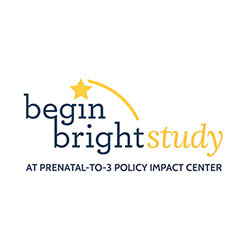REPORT FINDS BOLD ACTION NEEDED TO STABILIZE TEXAS CHILD CARE WORKFORCE FOR FAMILIES AND BUSINESSES
Press Contact: Molly Kramer, 615-343-8948, molly.m.kramer@vanderbilt.edu
The Prenatal-to-3 Policy Impact Center is excited to release Workgroup Recommendations to Inform the 2022 Child Care Workforce Strategic Plan, prepared for the Texas Workforce Commission (TWC). As in many states, Texas faces a shortage of high-quality child care—driven largely by a shortage of early childhood educators—that compromises healthy child development and parents’ ability to work. The newly released report outlines 11 bold recommendations to solve the child care crisis. The recommendations use data from a statewide, representative survey of more than 800 child care directors and come from a 27-person workgroup of Texas-based child care experts.
The workgroup recommended that the Texas legislature increase funding for child care to stabilize the market and ensure access to high-quality care, including through:
- Providing retention bonuses to educators
- Increasing subsidy reimbursement rates to reflect the true cost of care
- Expanding the number of subsidized slots provided
The workgroup also provides a series of recommendations for state and local government entities and educational institutions to raise workforce quality and support the child care sector. And the report outlines how other states are funding their improvements to early childhood education.
“The youngest Texans need an opportunity for healthy development, families need the opportunity to work, and all Texans deserve to participate in a healthy economy. Stabilizing the child care industry will help achieve all three goals,” said Dr. Cynthia Osborne, Executive Director of the Center and Professor of Early Childhood Education and Policy at Vanderbilt University’s Peabody College.
Following this release, the Center will publish four research briefs on specific aspects of the recommendations. The first brief, expected next week, will focus on workforce compensation, a central issue for stabilizing the workforce and improving the quality of child care.
The report was developed as part of the Prenatal-to-3 Policy Impact Center’s work with TWC to develop a strategic plan to support the child care workforce, in accordance with Texas House Bill (HB) 619 of the 88th Legislature of Texas. HB 619 was passed as the COVID-19 pandemic strained the child care industry almost to its breaking point.
To develop the report, the Prenatal-to-3 Policy Impact Center:
- conducted a landscape scan of best practices in Texas and other states
- designed and administered a survey of child care directors, with more than 800 responding
- convened a workgroup of 27 Texas child care experts
To read the full report, visit this page.



